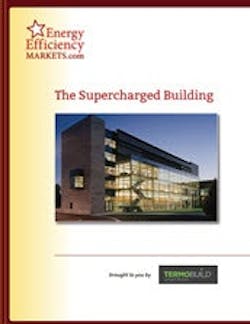As we’ve improved human shelters from caves to condos, we have engineered increasingly complex supercharged building systems to maintain our comfort. Modern central heating and cooling systems give us the freedom to live and work almost anywhere and be spared exposure to weather. This is, of course, a good thing. But humankind pays a price for so much comfort; it is highly energy intensive.
In fact, buildings account for 36 percent of total energy used in the US and 65 percent of electricity. Moreover, energy makes up almost one-fifth of a typical office building’s costs. Energy expenses are particularly high for hospitals, hotels and universities that run 24/7.
Thus, architects and engineers worldwide are trying to find ways to design large structures in a more energy conscious way. Often this means embedding ever greater complexity into construction. And while this achieves energy savings, the added systems and technology drive up the price of any building, and especially gr een building. This whitepaper describes a better way, one that costs no more than conventional construction, yet offers superior energy management and comfort.
But before we explain the solution, let’s look at where contemporary building often goes wrong.
Today’s building industry relies heavily on technology, but neglects age-old practices used for centuries to naturally heat and cool inner spaces. These practices paid attention to air flow and used temperature-moderating materials. Consider the Egyptian earthen homes or Pueblo adobe structures that incorporated mud brick for floors and walls. The concrete-like materials absorbed the cool air of evening and radiated it during the heat of day. Or conversely, at night they held the warmth of day inside when the air outdoors grew cold.
